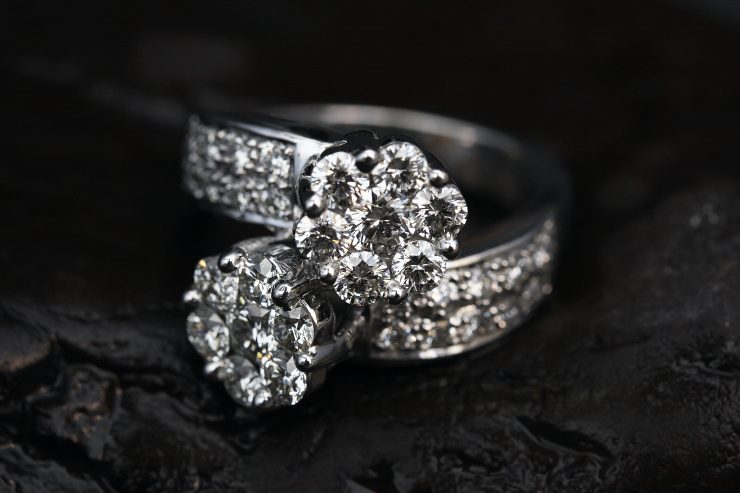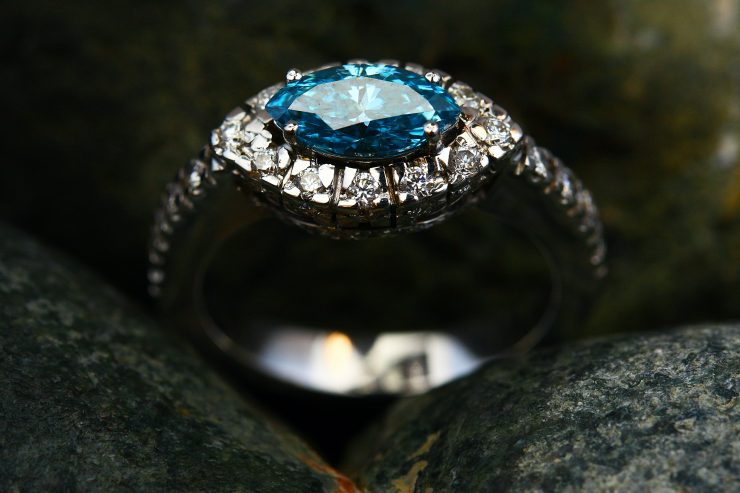Introduction: The Changing Landscape of Diamond Purchasing
In the past, purchasing a natural diamond almost exclusively involved visiting a brick-and-mortar jeweler, often with the guidance of a knowledgeable salesperson and under the soft glow of showroom lighting. However, the growth of e-commerce and technological advancements in digital imaging and gemological reporting have drastically altered consumer habits. Online retailers now offer vast inventories, competitive pricing, and in-depth diamond certifications—all accessible from the comfort of home. As both methods of purchase come with their own set of benefits and drawbacks, potential buyers face an increasingly complex decision: should they buy a natural diamond online or in a traditional store? This article aims to provide an objective, thorough comparison by exploring the key advantages and disadvantages of each approach. Through this analysis, readers will be better equipped to make an informed decision tailored to their priorities, whether those involve budget, selection, trust, or service.

Online Shopping: Extensive Inventory and Comparison Tools
One of the standout advantages of purchasing a natural diamond online is the access to a significantly broader selection. Online diamond retailers such as Blue Nile, James Allen, and Brilliant Earth are not limited by physical space, allowing them to list thousands—sometimes tens of thousands—of diamonds from various global suppliers. This expanded inventory empowers consumers to apply highly specific filters for cut, carat, color, clarity, fluorescence, and even symmetry. Additionally, these platforms often include advanced tools like 360-degree videos, virtual try-ons, and side-by-side comparisons, which make it easier to scrutinize diamonds in detail. The online marketplace also offers convenience, enabling shoppers to browse at any time and from any location, without the pressure of a sales environment. For those looking to thoroughly compare diamonds across multiple specifications and price points, the digital realm offers unmatched flexibility and efficiency.
Online Purchasing: Competitive Pricing and Cost Transparency
Another significant benefit of buying natural diamonds online is the generally lower cost compared to in-store purchases. Online retailers can operate with lower overhead costs, as they do not need to maintain physical storefronts, employ in-store staff, or manage localized marketing campaigns. These savings are often passed on to the customer in the form of more competitive pricing. Moreover, many websites provide price transparency tools that show how the cost of a diamond is influenced by its characteristics, which can be particularly helpful for budget-conscious shoppers. In many cases, customers can find equivalent stones online for 20–40% less than at physical jewelers. Free shipping, tax advantages depending on the jurisdiction, and seasonal promotions also contribute to reduced final costs. For price-sensitive buyers who value transparency and are confident in their ability to interpret certification reports and video imagery, online purchasing can be an economical and practical choice.
Online Buying: The Challenge of Physical Inspection
Despite its conveniences and cost advantages, purchasing a diamond online does come with notable limitations—chief among them being the inability to physically inspect the diamond before making a purchase. While high-resolution imagery and grading reports from reputable labs such as GIA or AGS provide critical data about a diamond’s quality, they cannot fully substitute the experience of seeing the diamond with one’s own eyes. Natural diamonds, even those with identical grades, can exhibit subtle differences in brilliance, fire, and scintillation. Furthermore, the setting process—how a diamond appears once mounted in a ring or necklace—may not be accurately visualized online. Some customers find it difficult to feel confident about their purchase without the opportunity to view the stone under different lighting conditions and from multiple angles in real life. This lack of tactile experience is a key disadvantage for buyers who value a hands-on approach.
In-Store Experience: Tangibility and Immediate Evaluation
Shopping for natural diamonds in a physical store offers the distinct advantage of immediacy and sensory engagement. Customers can evaluate multiple stones in real time, assessing how each diamond reacts to lighting, how it looks when set in various mounts, and how its sparkle compares to others. This is especially beneficial for buyers who are not fully confident interpreting grading reports or understanding abstract metrics such as “excellent cut” or “VS1 clarity.” Interacting directly with the diamond allows for a more emotional and personal connection, which can be an important factor when choosing a piece of jewelry for an engagement, anniversary, or major life event. Additionally, jewelers may offer in-house expertise to answer questions, educate buyers, and tailor recommendations to the shopper’s needs. For many, the act of holding and seeing the diamond before committing is an essential step in the buying journey.

In-Store Purchasing: Personalized Service and Immediate Gratification
Brick-and-mortar jewelry stores often provide a level of personalized service that online platforms may struggle to replicate. Experienced staff can guide buyers through the selection process, explain subtle differences in diamond attributes, and even offer tailored suggestions based on the customer’s preferences and budget. This consultative approach may be particularly beneficial for first-time diamond buyers who are unsure of what to look for. Additionally, in-store shopping allows for immediate gratification; customers can walk out with their chosen piece the same day, rather than waiting for it to ship. Jewelers can also provide on-the-spot services such as resizing, engraving, and cleaning. Some offer loyalty programs or extended warranties, adding to the perceived value of the purchase. For consumers who place a premium on customer interaction and real-time problem-solving, the in-store experience can be significantly more satisfying than its digital counterpart.
In-Store Downsides: Limited Inventory and Higher Markups
While physical stores offer valuable hands-on experiences, they typically present a more limited selection due to space constraints. This means that customers may have to settle for what’s available or wait for special orders, which can reduce the immediacy of the buying experience. In addition, pricing at traditional retailers tends to be higher. Operating costs for physical locations—such as rent, utilities, insurance, and staff wages—are factored into the price of the jewelry. Brick-and-mortar stores also rely on brand prestige, in-store ambiance, and customer loyalty to justify their markups. It’s not uncommon for diamonds in physical stores to cost significantly more than comparable stones available online, despite having similar quality grades and certifications. For buyers who are highly cost-sensitive or who desire a broad selection from the outset, these disadvantages may outweigh the benefits of shopping in person.
Security, Insurance, and Fraud Risks: A Shared Concern
Security and fraud risks are relevant to both online and in-store purchases, but they manifest differently in each setting. When purchasing online, the risks include counterfeit certificates, misleading listings, and potential scams, particularly if the vendor is not reputable. Buyers must verify that the retailer is certified, transparent about its policies, and offers diamonds graded by trusted labs such as GIA or AGS. Many reputable online sellers mitigate these risks with robust return policies, secure payment systems, and buyer protection guarantees. On the other hand, physical stores are generally perceived as safer due to their established presence and face-to-face transactions, but they are not immune to issues. Some stores may offer diamonds with inflated grading from less credible labs or pressure customers into higher-priced options. Regardless of the method, customers should always request detailed certification, verify return and refund policies, and consider purchasing insurance for high-value items.
Return Policies and Long-Term Flexibility
Return policies can vary significantly between online and in-store purchases, and they often influence consumer confidence. Online retailers typically offer generous return windows—often 30 days or more—with full refunds, as part of their effort to build trust in a non-physical shopping environment. These policies are essential for buyers who want the option to reassess the diamond once it arrives. However, returns may still involve the hassle of insured shipping and potential restocking fees, depending on the vendor. In contrast, brick-and-mortar stores may have stricter return policies, such as only offering store credit or requiring returns within a much shorter timeframe. Some local jewelers even implement a no-return policy on custom or resized pieces. Buyers who anticipate the need to return or exchange their diamond should carefully evaluate these terms before making a purchase, as the flexibility and ease of the return process can greatly affect overall satisfaction.
Conclusion: Weighing Personal Preferences and Priorities
The decision between buying a natural diamond online or in-store ultimately depends on a buyer’s individual priorities, comfort level, and purchasing goals. For those who prioritize cost efficiency, broad selection, and convenience, online shopping provides an attractive and modern solution. On the other hand, buyers who value tactile inspection, personalized service, and immediate possession of their purchase may find greater satisfaction in visiting a physical store. Neither approach is inherently superior; both carry distinct advantages and disadvantages that should be weighed in light of the buyer’s expectations and circumstances. With careful research, comparison, and an awareness of key trade-offs, consumers can navigate the diamond market confidently and make a purchase that aligns with both their emotional and financial investment.